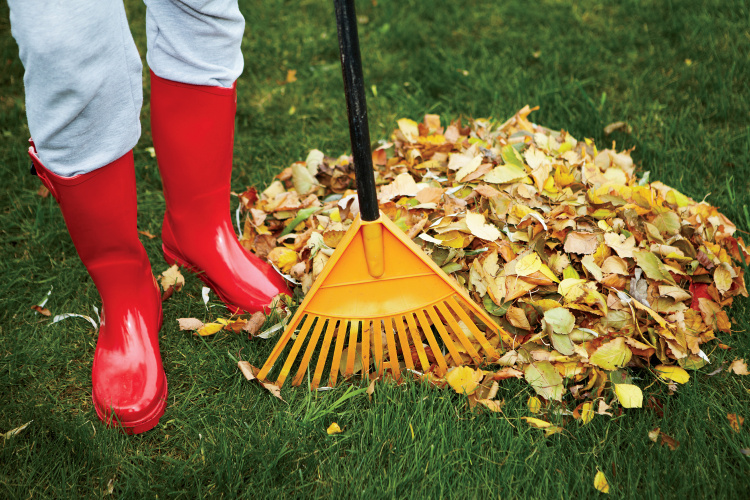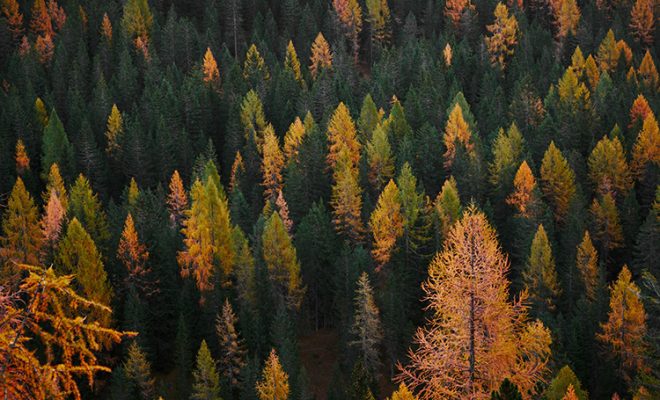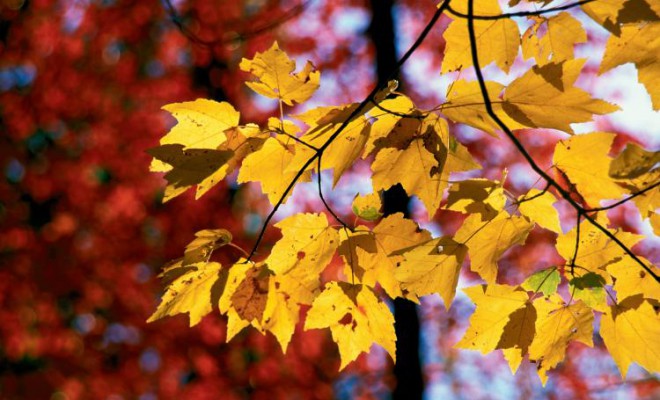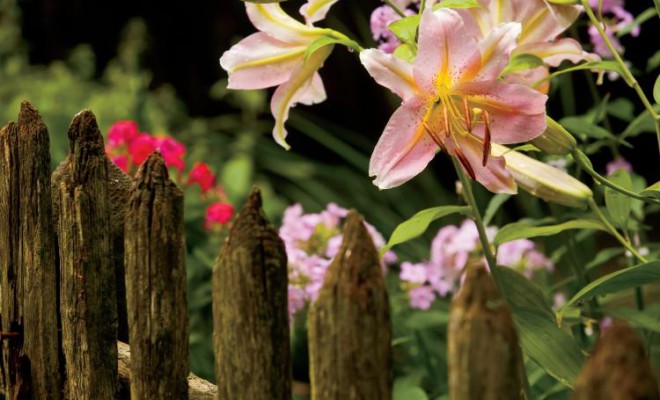
Your trees put all that energy into producing leaves – useful organic matter. Shouldn’t your property benefit? You can find better uses for fallen leaves than transporting them to municipal landfills, or worse, burning them. Think about it, a no-rake autumn.
Jump on your mower and mow those leaves in place on your lawn. You can go out and buy organic matter to top-dress your lawn, but why, when it’s already there? The organic matter and nutrients from shredded leaves improve turf quality and vigor.
Set the mower at 3 inches, and mow weekly during fall leaf season whether the grass needs it or not. Leaves seem to shred more easily when a little damp, so mow in the morning after a light dew.
Another use for leaves involves those shady spots under trees where grass doesn’t grow. Want to start a new shade garden? Direct the shredded leaves blowing out of the mower under the tree’s canopy. It creates a bed rich in organic matter, while also protecting the tree’s roots from temperature extremes and moisture loss. The leaves decompose over time, mimicking what happens in the forest. The tree self-fertilizes, freeing you from both raking and fertilizing.
If you already have a shade garden, don’t worry about smothering your shade-tolerant perennials. These tough plants will emerge through what remains of the shredded leaves in the spring. The leaves will continue as mulch until fully decomposed. Just add your regular mulch right on top.
Gardeners who compost their yard waste and kitchen scraps know to stockpile their leaves for mixing in with greens the rest of the year when dried leaves don’t exist in abundance. Shredding them first with the mower cuts down on the amount of time needed to turn the various additions into a gardener’s “black gold.”
Need yet another use for your leaves? Try sheet composting on annual beds, which includes vegetable gardens. Blow or rake the shredded leaves onto the bed. Sprinkle some balanced fertilizer (10-10-10), following package directions on the shredded leaves, and water to disperse the fertilizer, which speeds up the decomposition process and also helps to anchor the leaves in place. Next spring, either turn the remaining clumps into the soil, or just pull aside and plant. Cover the remainder with your regular mulch of choice.
Don’t throw away a valuable resource with your trash. Instead, use it to improve your landscape, save money and cut down on garden chores.
Ask the Expert
Q: When should I move my tropical plants back inside?
A: I tuck mine safely into the warmth when night temperatures reach the 40s. Check for insects before bringing them in.
Q: I have a pot of annuals that really looks great. Can I overwinter it in the house?
A: Possibly, but they won’t continue to look good. In fact, the plants will constantly drop leaves and blooms, making a mess until you are just left with leggy branches





I wish this article would be reprinted in the ILFB Will County newspaper!! Maraline (pen Marlene) AKA – ” the Anti Leaf Burning Lady”
Thank you!! Your article on the value of leaves was tremendous!! I wish we could abolish leaf burning in Will County!!!